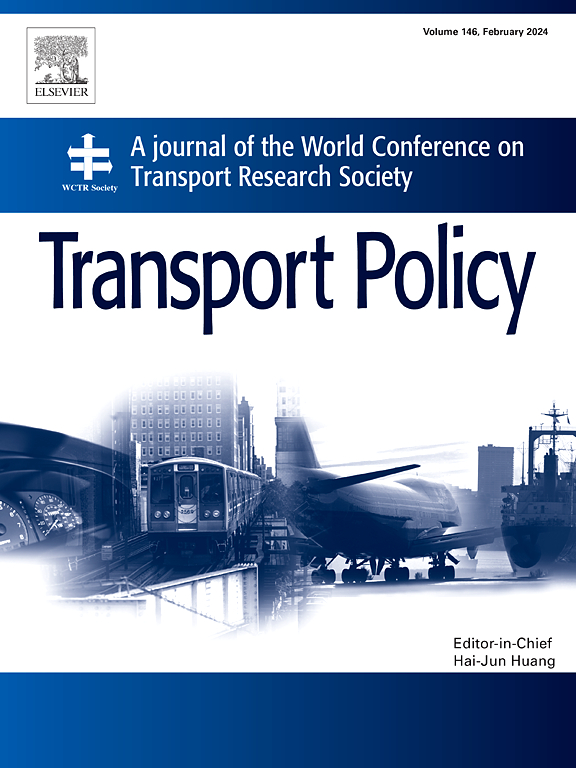Understanding travel patterns of ride-hailing service sub-population groups and effects of transit investment on ride-hailing users’ potential mode switching: A case study of Ho Chi Minh City, Vietnam
IF 6.3
2区 工程技术
Q1 ECONOMICS
引用次数: 0
Abstract
Ride-hailing services (especially motorcycle-based ride-hailing services -MBRH) have seen a boom in Vietnamese cities because these services can serve as a more efficient alternative to urban mobility. However, relatively little is known about travel patterns of sub-population groups of ride-hailing services, including the spatiotemporal demand, origin, and destination patterns of ride-hailing users, and the effects of transit investment on the mode switching from current ride-hailing users. This information is particularly important for the implementation of traffic management measures focusing on public transport, in light of concerns about the reverse side of the ride-hailing services, such as aggravating the traffic conditions and causing losses in the public transport market.
In this paper, we present an in-depth analysis of the travel patterns of MBRH, based on large-scale household survey data collected in Ho Chi Minh City, Vietnam, with the statistical technique of Chi-square and Kruskal-Wallis tests. In addition, the independent and combined effects of Revealed Preference (RP) and Stated Preference (SP) data on the mode switch for MBRH users were studied using the Nested Logit models. The results indicate that speed and flexibility are seen as outstanding features of MBRH in attracting users. Furthermore, mode switch model estimation results show that traditional attributes (i.e., travel time and cost) and transit design factors (i.e., accessibility) are of lower importance to mode-switching behavior compared with sociodemographic factors. These findings suggest that MBRH services fill an important transportation niche and may affect the environment and transportation equity.
求助全文
约1分钟内获得全文
求助全文
来源期刊

Transport Policy
Multiple-
CiteScore
12.10
自引率
10.30%
发文量
282
期刊介绍:
Transport Policy is an international journal aimed at bridging the gap between theory and practice in transport. Its subject areas reflect the concerns of policymakers in government, industry, voluntary organisations and the public at large, providing independent, original and rigorous analysis to understand how policy decisions have been taken, monitor their effects, and suggest how they may be improved. The journal treats the transport sector comprehensively, and in the context of other sectors including energy, housing, industry and planning. All modes are covered: land, sea and air; road and rail; public and private; motorised and non-motorised; passenger and freight.
 求助内容:
求助内容: 应助结果提醒方式:
应助结果提醒方式:


